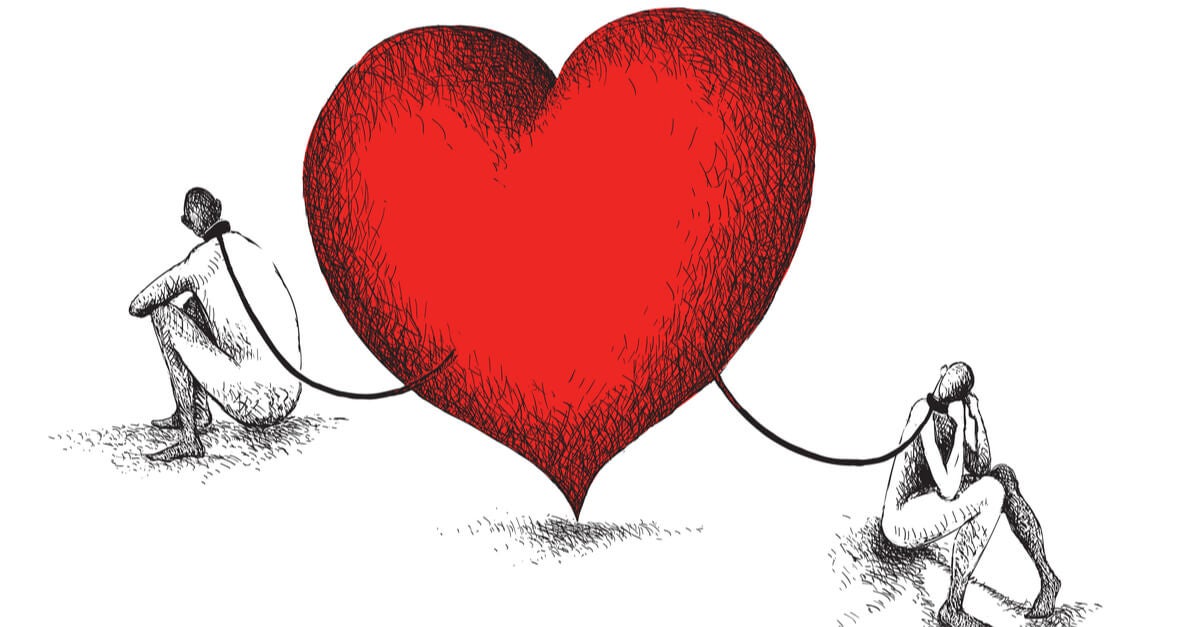The characteristics of phylophobia show a very specific type of phobia: the phobia of developing any kind of emotional connection with a person.
There are those who claim that behind this behavior there may be a history of domestic violence, the divorce mark of parents, etc. , however, the reality is that this is not always so, many times there is no clear and accurate explanation.
- How can this happen? Let’s ask ourselves about this phenomenon: what makes a man or woman feel a real fear of feeling this seemingly wonderful emotion?.
While for a good part of the population infatuation is something exciting and intense, for others it is scary, on the other hand, and although there are those who think that this kind of phobia may be the result of our current society, we are actually faced with a kind of phobia that has always existed.
An example: Elizabeth I of England, known as the Virgin Queen, is often considered one of the most famous personalities with phylophobia.
They say his refusal to marry could be due to what happened to his mother. Anne Boleyn was executed by Elizabeth I’s father, King Henry VIII, for falling in love with another man.
However, it is known that Elizabeth I of England came to have several lovers, but, according to her, she preferred to exclude love from her life and decided never to marry, she could never conceive of imagining her life as one with another.
Phylophobia marked his reign in the same way that it conditions the daily lives of many people.
“While phylophobia is not included in the American Psychiatric Association’s Diagnostic and Statistical Manual of Mental Disorders (DSM), we face a reality that is observed quite frequently. “
Phylophobia works very differently: there are no two identical cases or a simple diagnostic pattern.
In fact, if we look for this condition in the Diagnostic and Statistical Manual of Mental Disorders (DSM), we will see that it simply appears as a social phobia.
Experts in the field, such as Dr. Scott Dehorty of the Delphi Behavioral Health Group in Maryland, USA, say the characteristics of phylophobia appear in both men and women.
There are no biological or genetic factors that explain this, but this often appears simply from a bad experience with an ex-partner (or ex-partner).
From then on, fear arises, the fear of the same thing happening before, the return of suffering and pain.
Gradually, fear becomes a phobia and, as we know, with the emergence of a phobia other problems can arise, such as anxiety disorders, depression, social isolation, drug use, etc.
Let’s look at the main characteristics of phylophobia
When we think of phylophobia, we see almost immediately people who are fleeing at all costs from an affectionate commitment and relationship, however, it is worth mentioning that there are people who suffer from phylophobia and, even in this case, engage with someone. However, this relationship is very damaging.
On the other side are the philophobes that avoid any relationship at all costs. These people are not only afraid of commitment, of the possibility of having a partner, of allowing the possibility of feeling affection, passion.
In this case, any kind of emotional connection, whatever it is, such as friendship, is avoided.
If the previous type of phylophobia was particularly harmful, it is highly destructive to those who present it. The motive? We face a type of social phobia that is often associated with isolation, generalized anxiety, panic attacks and various personality disorders.
On the other hand, it should be noted that the characteristics of phylophobia, in this case, also show physical symptoms.
When someone tries to approach these people, to establish a bond of affection, camaraderie or friendship, they feel uncomfortable, with tachycardia, sweating and great discomfort.
Treatment options for people with the above-mentioned phylophobia characteristics tend to vary considerably. Sometimes, depending on the intensity of the phobia, simply change your lifestyle or follow a specific type of therapy: exposure therapy.
In this therapy anxiety is worked from certain scenes or situations proposed by the therapist, in some cases medication may also be necessary, especially if the person already suffers from social isolation, depression, high anxiety, etc.
However, in general what we have before us is a type of phobia, so approaches like cognitive behavioral therapy are often of great help.
It can be used, for example, to identify fears, change thoughts, beliefs and negative reactions related to the origin of phobia.
In all cases there is treatment and, if there is a firm commitment on the part of the patient, it is possible to have a marked improvement. Phylophobia can disappear to give way to better quality in our relationships.

